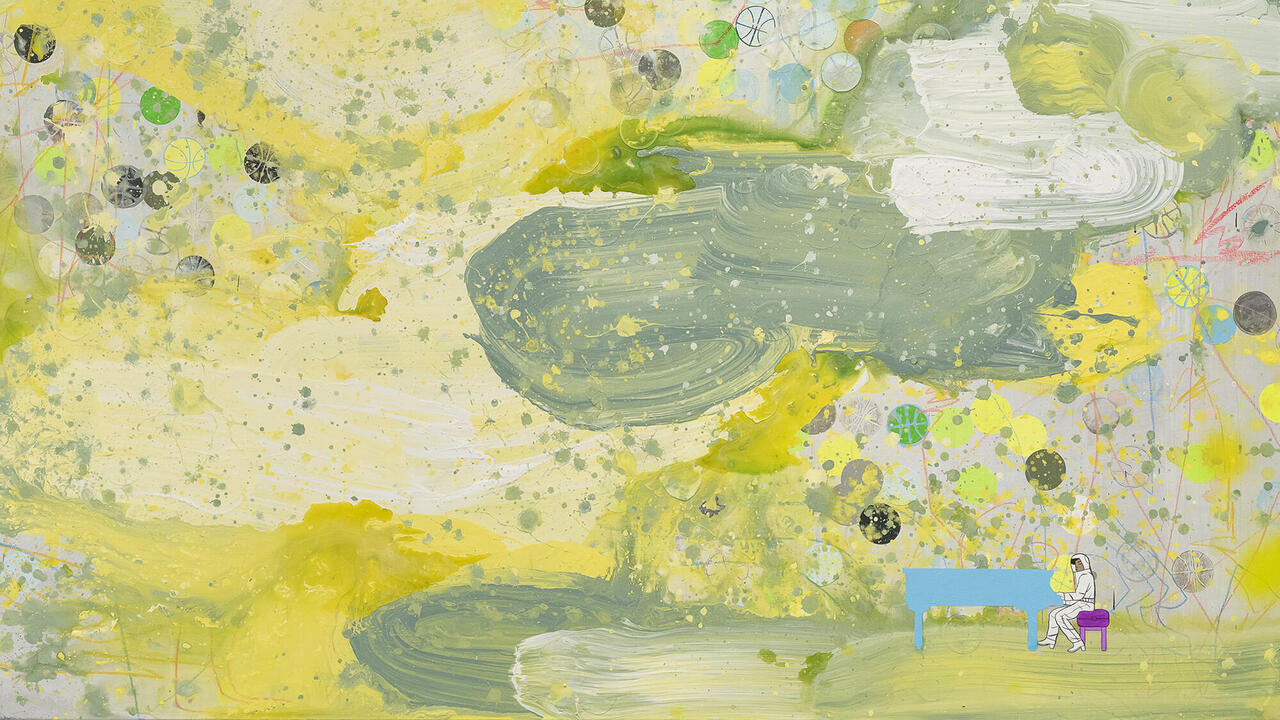Folkert de Jong

During his stint at the Glasgow School of Art, Charles Rennie Mackintosh was part of a circle of students who called themselves ‘The Immortals’. The name was apt, for Mackintosh was subsequently immortalized as one of the leading proponents of the late 19th-century Arts and Crafts movement, which sought to reaffirm the place of craftsmanship at a time of rising industrialization. Previously displayed at the imposing Mackintosh Museum at the Glasgow School of Art, Dutch artist Folkert de Jong’s exhibition ‘The Immortals’ at Galerie Dukan Hourdequin concretized the conflict between creativity and mass production, art and economic imperatives, in a series of mesmerizing sculptural tableaux portraying the Scottish architect/designer, his wife Margaret MacDonald and sundry other characters. Each tableau consisted of one or more life-sized Styrofoam statues, each decked out in lurid colours and outlandish garments. Fabricated from a material that does not decompose, these makeshift figures likewise stand at the crossroads of artisanship and technology, while exploring what it means to be ‘immortal’.
De Jong addresses this theme not only in his statues’ poses and materials but also in their colours and facial features. In Mr. and Mrs. Mackintosh (all works 2012), Mackintosh stands next to his wife, their eyes transfixed and their faces and clothes covered with green or red blotches – the use of bright colours signifying that they are mortals. Across from the couple stands a solitary female figure with the same body as MacDonald, but whose face has been taken from the death mask of L’Inconnue de la Seine (the unknown woman of the Seine), an unidentified drowning victim immortalized by Vladimir Nabokov and Louis Aragon. With closed eyes and her face painted a uniform spectral blue, she seemed to symbolize MacDonald’s accession to immortality. She also materialized the illustrious L’Inconnue herself, triggering, like many of De Jong’s figures, what critic Sue-ann van der Zijpp has referred to as the ‘historical sensation’, the conviction that one is face-to-face with an authentic figure or event from the past – an experience close to that of the sublime.
That said, the exhibition was more than just a series of skewed homages to historical greats. It also addressed the workings of celebrity itself: in the tableau The Immortals, the unknown woman reappeared with a banker’s bowler hat on her head, standing between two men: on one side, the autocratic William of Orange, symbol of royal power and, on the other, the quintessential artist figure, personified here by Mackintosh himself. Somewhat caricatured and didactic in tone, the work highlighted the temptations put in the artist’s way – money and power – warning against the dangers of compromise and self-deceit.
De Jong’s sculptures are far removed from the self-effacing objects typical of the more minimal strand of art today. They instead subscribe to a messy physicality – all the more so as he creates them by first producing Styrofoam figures which he then dismembers and reassembles in different poses. While Gelitin’s aesthetic of extravagance and the fragmented bodies of Hans Bellmer’s dolls might come to mind, De Jong’s work has a more theatrical side to it: he has also designed costumes and sets for New York theatre company The Wooster Group, while the ghostly guitar player constituting the last tableau in the exhibition, The Player, exuded an attitude of critical detachment worthy of the theatre of Bertolt Brecht. Here, the guitar player sits on a Mackintosh chair, holding an instrument inspired by Picasso’s guitar works. His face and clothes are adapted not only from the Spanish master, but also from Mackintosh and De Jong; the figure of the player seems to decry the reduction of immortality to empty signifiers of contemporary consumer culture. Here too, De Jong is a trifle didactic, but then so was that other immortal, Brecht.
















